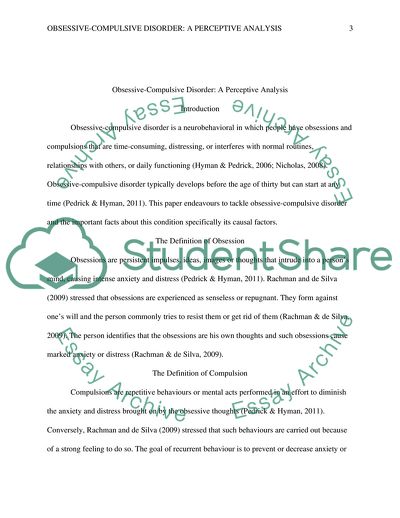Cite this document
(Obsessive-Compulsive Disorder Coursework Example | Topics and Well Written Essays - 2000 words, n.d.)
Obsessive-Compulsive Disorder Coursework Example | Topics and Well Written Essays - 2000 words. https://studentshare.org/psychology/1761940-supporting-your-argument-with-evidence-explain-the-biological-and-psychological-factors-of-one-anxiety-disorders-and-discuss-what-the-optimal-treatments-might-be-for-a-person-suffering-from-this-anxiety-disorder
Obsessive-Compulsive Disorder Coursework Example | Topics and Well Written Essays - 2000 words. https://studentshare.org/psychology/1761940-supporting-your-argument-with-evidence-explain-the-biological-and-psychological-factors-of-one-anxiety-disorders-and-discuss-what-the-optimal-treatments-might-be-for-a-person-suffering-from-this-anxiety-disorder
(Obsessive-Compulsive Disorder Coursework Example | Topics and Well Written Essays - 2000 Words)
Obsessive-Compulsive Disorder Coursework Example | Topics and Well Written Essays - 2000 Words. https://studentshare.org/psychology/1761940-supporting-your-argument-with-evidence-explain-the-biological-and-psychological-factors-of-one-anxiety-disorders-and-discuss-what-the-optimal-treatments-might-be-for-a-person-suffering-from-this-anxiety-disorder.
Obsessive-Compulsive Disorder Coursework Example | Topics and Well Written Essays - 2000 Words. https://studentshare.org/psychology/1761940-supporting-your-argument-with-evidence-explain-the-biological-and-psychological-factors-of-one-anxiety-disorders-and-discuss-what-the-optimal-treatments-might-be-for-a-person-suffering-from-this-anxiety-disorder.
“Obsessive-Compulsive Disorder Coursework Example | Topics and Well Written Essays - 2000 Words”. https://studentshare.org/psychology/1761940-supporting-your-argument-with-evidence-explain-the-biological-and-psychological-factors-of-one-anxiety-disorders-and-discuss-what-the-optimal-treatments-might-be-for-a-person-suffering-from-this-anxiety-disorder.


